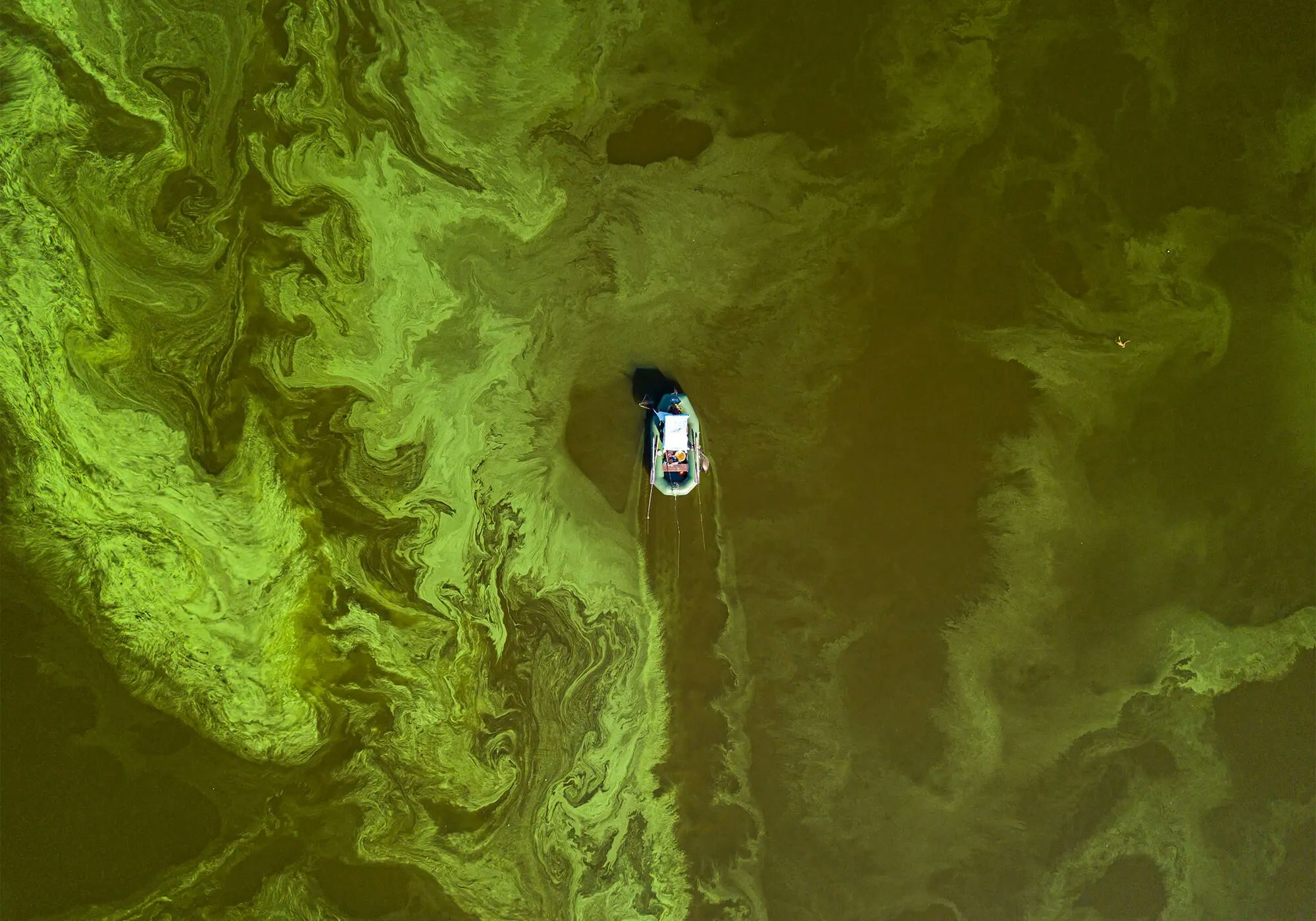Environmental Pollution And Your Liability

May 23, 2021 | Alex Terlecky
Reviewing these potential exposures can protect you and the environment
Last summer, biologists from the Colorado Parks and Wildlife and the state health department detected toxic blue-green algae blooms in multiple lakes and reservoirs across the state.
Pollution and contaminates in rivers, lakes, and reservoirs have increased in recent years due to an increase in water temperature, which provides more nutrients for the algae to feed off of.
However, toxic algal blooms aren’t the only cause of water pollution around the state.
The majority of underground storage tanks contain petroleum products such as gasoline and diesel, and leaks are oftentimes undetectable. When leaks do occur, they seep into the ground, which contaminates the groundwater supply with chemicals harmful to the environment as well as to humans.
Algae Blooms, Reservoirs, and Lakes
According to American Rivers, “more frequent droughts and shifting precipitation patterns lower water levels in river, lakes, and streams, leaving less water to dilute pollutants,” and higher temperatures can “cause more frequent algal blooms and reduced dissolved oxygen levels.”
When this happens, blue-green algae can take hold in bodies of water, including reservoirs, resulting in a public health risk for anyone that comes in contact with the water.
The toxic algae that can sicken humans and kill animals is of the blue-green variety, which tends to look like pea soup, strings of seaweed, or turquoise paint streaks. Blue-green algae, also called cyanobacteria, produces the toxin microcystin.
For humans, the health effects of ingesting blue-green algae are vomiting, nausea, rash, and difficulty breathing. For animals, such as dogs, ingestion has actually proved fatal.
Health officials currently recommend lakes or reservoirs close to recreational activities if the level of blue-green algae in the water reaches eight parts per million or higher in measurement. However, lake closure is up to the managing agency or owner of the lake or reservoir.
Scientists do not know much about this emerging contaminant at this time, but the data currently shows an upward trend in reporting each year, with warmer months proving to be the worst for blooms, which develop in May and June and peak in August and September.
What we do know is that blue-green algae feeds on nitrogen and phosphorus, elements that end up in water through runoff.
They often originate from pet and livestock waste, lawn fertilizers, and de-icers. As toxic algae blooms, it can then at some point return to the land as polluted runoff.
For organizations that oversee a reservoir, lake, or public water source, there are a few different ways to minimize the risk of a toxic algae bloom:
- Introduce pond aeration and water movement though aerators or fountains to increase oxygen
- Pick up and dispose of pet waste
- Incorporate native vegetation rather than using cement banking or manicured landscaping
- Remove grass clippings and leaves to prevent decomposition in or around water sources
- Use phosphorous-free fertilizers and detergent to limit nutrient rich run off
It is also important to employ the use of proper signage or fencing in order to keep people out of water that may be harmful to their health.
Logistically, installing a fence is the most surefire way to keep people out, but this may not be the most cost-effective or visually appealing method. Signage may be the best route to provide people with information and avoid liability for accidents.
Staff should also be aware of the risks and warning signs of toxic algae blooms in any body of water, whether it is a reservoir, or a small pond at the golf course.
It is hard to determine exactly if the algae is toxic by just looking at it; however, the simplest way to test this, is to put the algae in a plastic water bottle, shake it up, and observe.
If the algae floats to the top, it is almost always blue-green algae because this contains gas bubbles. If it sinks, it is non-toxic green algae.
Storage Tanks and Pollution Underground
In April of 2018, workers deconstructing an oil storage tank in Boulder County battery discovered hydrocarbons had leaked from the tank into soil, contaminating the groundwater with benzene, a known carcinogen. It was unknown how long this leak had been in place.
With many organizations utilizing underground storage tanks (USTs) as a scheduled property, it is imperative to maintain best practices and regular inspections to ensure that no leakage is occurring.
Early detection of a UST release is important to mitigating damage, as is understanding the source of the release, the type of fuel released, and the response.
Knowing what to look for when it comes to leaks from a UST is critically important. This is because owners or managers of USTs are liable for any potential damages to health or the environment.
Warning signs of a leak are best identified through regular inspections and monitoring, inventory control, and the use of leak-detection technology.
As soon as a leak is confirmed, notification to the appropriate government agency is required to protect public health, safety, and the environment.
Owners and operators are required to “investigate, confirm, and notify the authorities of all suspected releases within 24 hours or other time period specified by the state or tribal agency.”
For more information about the immediate response actions required following the confirmation of a leak, visit www.epa.gov/ust/.
The most common cause of a leaking UST comes from steel product lines and fitting, since steel is corrosive. Other common spots for leaks to occur include the bottoms of USTs, piping, fill manholes, improperly fitted constructions, STP pumps, and dispensing pumps.
A leak or release can also occur when the tank is overfilled initially when product is delivered to the UST. Over the lifespan of tanks, small leaks add up to significant spills that can cause health and environmental damage for which organizations can be held liable.
If you are concerned about release from a UST, there are a few methods you can employ to ensure detection.
- Automatic tank gauging
- Monitoring for vapor in the soil
- Monitoring for contamination in groundwater
- Interstitial monitoring
- Statistical inventory reconciliation
- Weekly manual tank gauging
- Annual tank tightness testing
If you are a member of the CSD Pool, our Pollution Liability Program covers new events with newly discovered pollution coming from covered facilities that affect first or third party property.
For coverage to apply, USTs must be scheduled. From then on, the policy covers the mitigation of the source of the pollutant, cleanup of the polluted material, and the cost of legal defense.
Taking the Right Steps
Between underground storage tanks and above ground water sources, there is plenty of room for error or negligence when it comes to pollution.
Understand the warning signs to keep your staff and constituents safe when it comes to pollution, whether it occurs above or below the surface. And, most importantly, take steps to protect both the land and surrounding communities from health hazards and environmental waste.
For more information about coverage, email us at info@csdpool.org.

